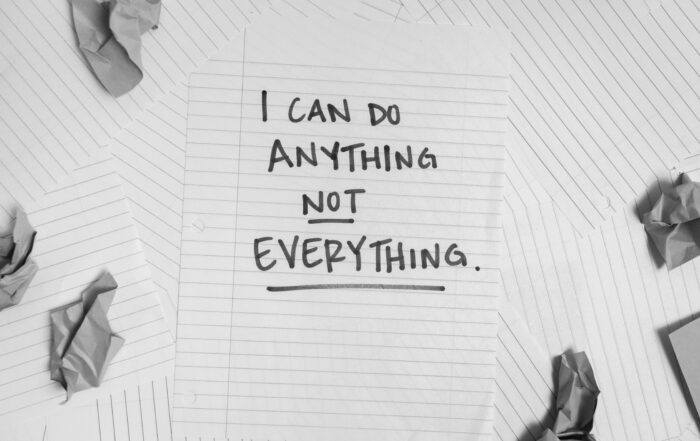The Discipline of Focus and Prioritization—Why Deep Work Outperforms Multitasking Every Time
In today’s hustle-driven culture, multitasking is often praised—but it’s actually a productivity killer. Research shows that task-switching reduces efficiency and increases errors, while deep, focused work leads to meaningful results. Tools like the Eisenhower Matrix help prioritize effectively by distinguishing between urgency and importance, guiding you toward high-impact tasks. Time-blocking your day protects your focus and energy, allowing space for strategic, uninterrupted work. Focus isn’t a natural trait—it’s a discipline that requires boundaries, intentional planning, and the courage to say no. True success doesn’t come from doing more, but from concentrating deeply on what matters most.

Urgent vs. Important—The Real Battle for Your Time and Attention
The Skill of Navigating Seasons Many people end their days exhausted but unsure if they’ve made real progress—often because they’ve focused on urgency, not importance. The Eisenhower Matrix helps categorize tasks so you can prioritize [...]
How to Prioritize, Stay Productive, and Handle the Unexpected
The Skill of Navigating Seasons Effective time management isn’t about doing more—it’s about doing what matters most with focus and intention. High performers prioritize impact over urgency, using tools like the Eisenhower Matrix to focus [...]
How to Stay Productive When Life Doesn’t Go According to Plan
The Skill of Navigating Seasons Even the best-laid plans can be disrupted—but true productivity lies in how you respond, not in maintaining perfection. High performers don’t control everything—they stay resilient, adapt quickly, and reset with [...]
Productivity Hacks That Actually Work—Tools & Strategies for Peak Performance
The Skill of Navigating Seasons True productivity isn’t about doing more—it’s about doing what matters most with clarity and focus. Proven frameworks like the Pomodoro Technique, 80/20 Rule, Two-Minute Rule, and Time Blocking help [...]
Mastering Time: The Key to Productivity and Balance
Mastering Time: The Key to Productivity and Balance Time is your most valuable asset, and mastering it is the key to greater productivity, clarity, and balance. High achievers don’t have more hours—they use [...]
The Art of Overcoming Hurdles—Why Resistance is a Sign You’re Headed in the Right Direction
The Skill of Navigating Seasons Every significant vision comes with resistance, but that resistance is often a sign you're on the right path. Drawing from the story of Nehemiah, who faced opposition while rebuilding [...]
Productivity & Leadership
March 27, 2025
In a culture that idolizes hustle and glorifies being “busy,” multitasking has become the norm. We check email during meetings, respond to Slack messages mid-project, and wear our ability to “juggle it all” like a badge of honor.
But here’s the hard truth: multitasking is killing your productivity.
If you want to produce elite-level results, you don’t need more hours in the day—you need more focus. The most successful professionals aren’t the busiest. They’re the most intentional with their time and attention

Why Multitasking is a Myth
We think we’re being productive when we switch rapidly between tasks. In reality, we’re splitting our attention and draining our brainpower.
- Studies show multitasking can reduce productivity by up to 40%
- Every “task switch” costs you time and focus due to cognitive switching penalties
- You’re more prone to errors, lower retention, and surface-level thinking
Deep work—defined as uninterrupted, high-focus effort on a meaningful task—is where real results come from. This isn’t about doing more. It’s about doing better.
Prioritization Starts with Clarity: Use the Eisenhower Matrix
Before you can focus, you need to know what deserves your attention. Enter: The Eisenhower Matrix.
| Category | What It Means | What to Do |
|---|---|---|
| Urgent & Important | Crises, deadlines | Do it now |
| Important, Not Urgent | Strategy, planning, skill-building | Schedule it |
| Urgent, Not Important | Interruptions, admin | Delegate it |
| Neither | Time-wasters, distractions | Eliminate it |
Action Tip: Every morning, run your to-do list through this matrix. Then commit to tackling Quadrant 2 work during your peak energy hours. That’s where long-term success is built. Quadrant 2 = Important but Not Urgent
These are the high-value, strategic tasks that don’t demand your immediate attention—but they are critical for long-term success.
Why Quadrant 2 Is So Powerful
Most people live in Quadrant 1 (urgent + important) putting out fires—or worse, Quadrant 3 (urgent + not important), reacting to other people’s agendas.
But Quadrant 2 is where growth happens.
This is where you move from being reactive to proactive. From surviving to excelling.
Time-Blocking: Structure Your Day, Protect Your Focus
Time-blocking is a simple yet powerful strategy used by top performers from Elon Musk to Bill Gates. The idea is to plan your day in blocks of focused time—each dedicated to a single type of task.
Why It Works:
- Reduces decision fatigue (you always know what you’re working on)
- Protects time for high-value activities
- Creates natural boundaries against distractions and interruptions
How to Start:
- Audit your week: Identify your top 3 recurring priorities.
-
Create blocks for deep work: 60–90 minutes per session, no distractions.
- Treat time blocks like meetings: Non-negotiable and protected.
- Add buffers between meetings: Avoid back-to-back burnout.
Pro Tip: Start your day with your most important work block. Don’t open email until you’ve made meaningful progress.
Focus Is a Discipline—Not a Trait
You don’t have to be naturally focused. You just need to build the discipline to protect your attention from the noise.
That means:
- Saying no more often
- Designing a distraction-free workspace (use tools like Freedom App or Do Not Disturb mode)
- Creating habits that reward depth over urgency
Every time you say “yes” to something unimportant, you’re saying “no” to your most valuable goals.
Final Thought: You’re Not a Juggler—You’re a Strategist
Success doesn’t come from how much you do—it comes from how deeply you focus on the work that matters most. Start treating your attention like a limited resource, because it is. Protect it. Channel it. And watch your performance transform.
Do This Today:
- Block off 90 minutes for one high-impact task—and guard it fiercely.
- Use the Eisenhower Matrix to sort today’s tasks into four clear categories.
- Eliminate or delegate one low-value task from your plate.
- Say no to one distraction disguised as an “opportunity.”
Multitasking is noise. Focus is your competitive advantage.
Urgent vs. Important—The Real Battle for Your Time and Attention
The Skill of Navigating Seasons Many people end their days exhausted but unsure if they’ve made real progress—often because they’ve focused on urgency, not importance. The Eisenhower [...]
How to Prioritize, Stay Productive, and Handle the Unexpected
The Skill of Navigating Seasons Effective time management isn’t about doing more—it’s about doing what matters most with focus and intention. High performers prioritize impact over urgency, [...]
How to Stay Productive When Life Doesn’t Go According to Plan
The Skill of Navigating Seasons Even the best-laid plans can be disrupted—but true productivity lies in how you respond, not in maintaining perfection. High performers don’t control [...]



















